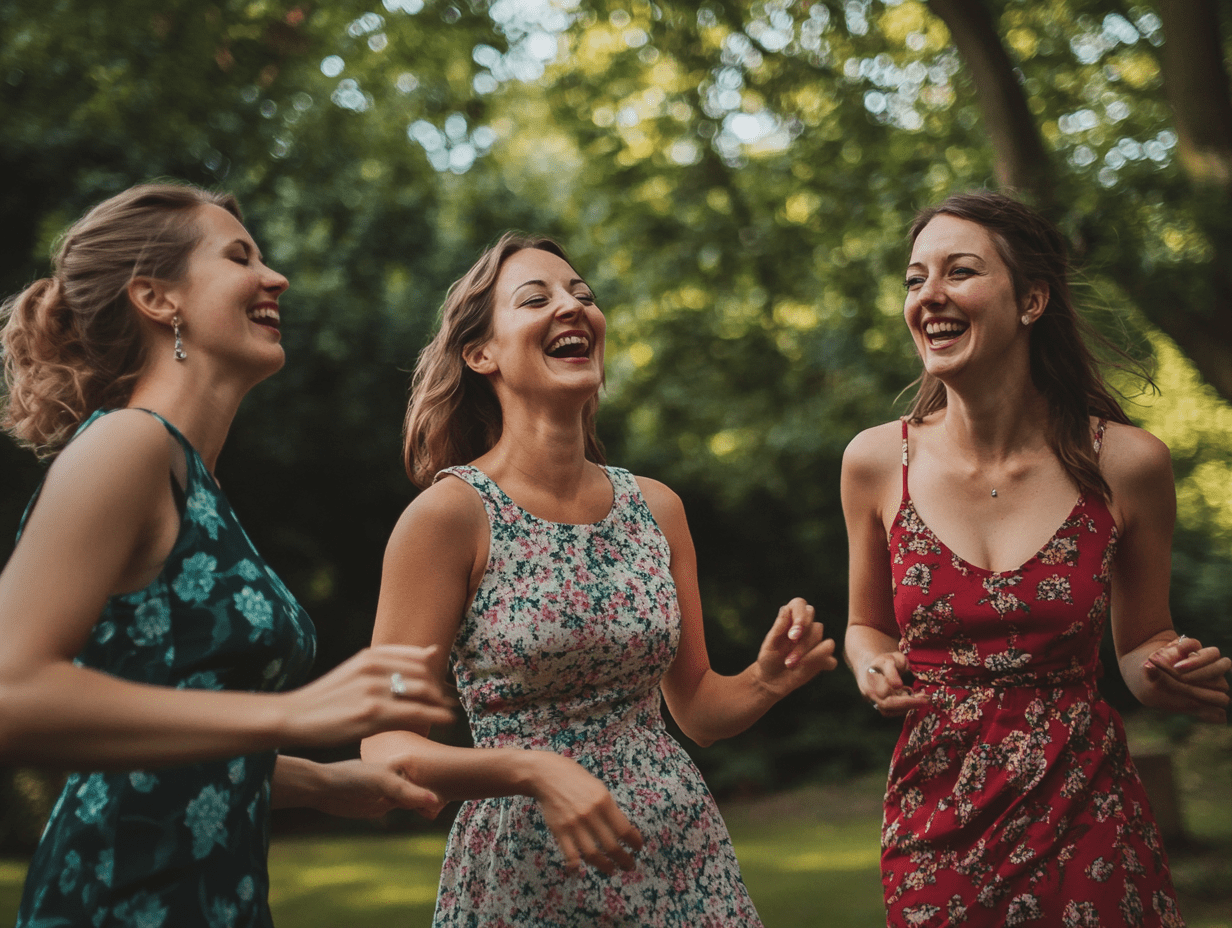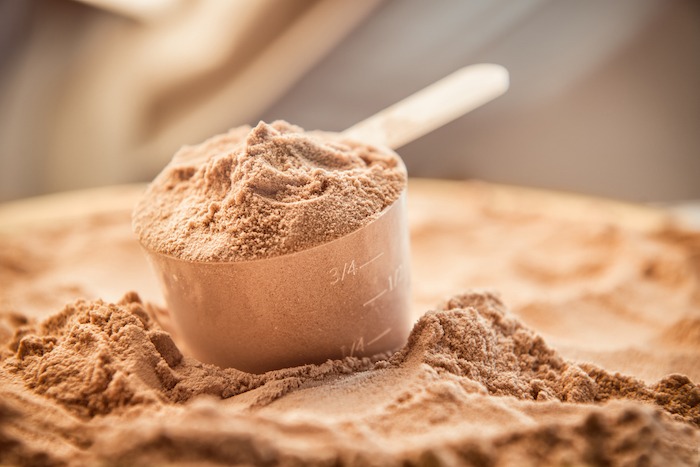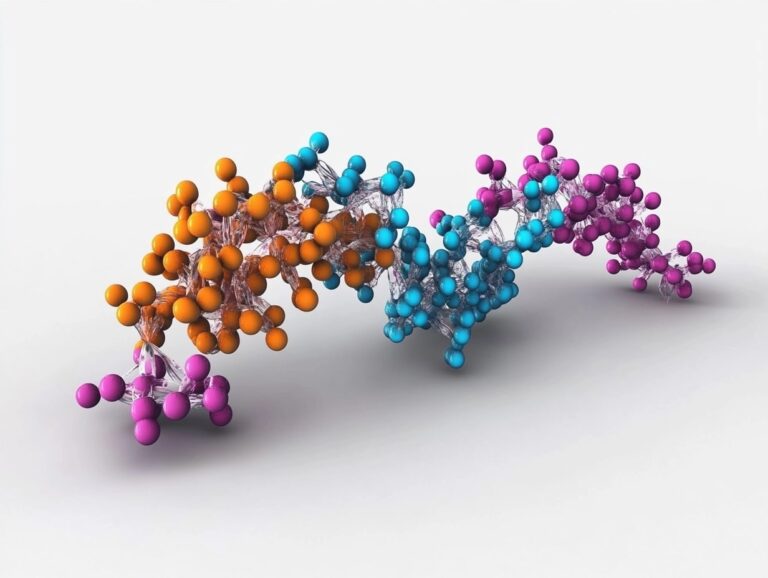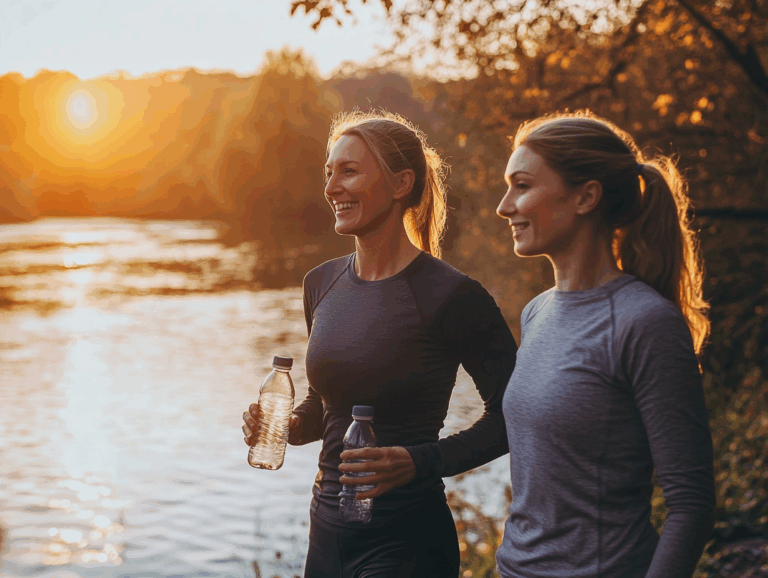The Mental Health Boost: How Fitness Fights Aging Stress
The Mental Health Boost: How Fitness Fights Aging Stress Why…
The Mental Health Boost: How Fitness Fights Aging Stress
Why Moving Your Body Might Be the Best Thing You Do for Your Mind After 50
Three years ago, I found myself standing in my kitchen at 2 a.m., wide awake, eating peanut butter straight from the jar. My mind raced with worries about retirement savings, my aging parents, and whether I’d accidentally liked a decade-old Facebook photo of my ex. When my doctor later asked about my stress levels, I joked, “I’m basically a walking espresso shot.” She didn’t laugh. Instead, she said something that changed everything: “Your brain isn’t broken—it’s just thirsty for movement.”
Turns out, fitness isn’t just about fitting into jeans or climbing stairs without huffing. It’s a lifeline for our mental health as we age—a way to quiet the noise, sharpen our minds, and rediscover joy. Let’s unpack why exercise might be the most underrated antidepressant in your toolkit.
The Science of Sweat and Serotonin
When we think of “mental health,” we often picture therapy couches or meditation apps. But research shows that physical activity is equally powerful for our brains—especially after 50. Here’s why:
1. Exercise Fights the Stress Monster
As we age, stress morphs. It’s not just work deadlines anymore—it’s health scares, caregiving roles, or that existential “What’s my purpose now?” itch. Exercise lowers cortisol (the stress hormone) and boosts endorphins, those feel-good chemicals that act like nature’s Xanax. A 2022 study in JAMA Psychiatry found that adults over 50 who exercised regularly had 30% lower cortisol levels than sedentary peers.
During a particularly brutal family crisis, I started walking laps around my garden every night. I called it my “rage stroll.” After 20 minutes, I’d return calmer—and once, covered in maple seeds I’d absentmindedly ripped off a tree.
2. It’s a Brainpower Booster
Ever walk into a room and forget why? Mild cognitive decline is common as we age, but exercise can pump the brakes. Aerobic activity increases blood flow to the brain, spurring the growth of new neurons in the hippocampus (the memory HQ). A 2023 study showed that older adults who danced twice weekly improved their cognitive test scores by 15% in six months.
3. The Social Secret Weapon
Loneliness peaks in midlife and beyond, but group fitness combats isolation. Whether it’s a water aerobics class or a morning walking group, moving with others builds camaraderie—and accountability. Research shows socially active seniors have a 50% lower risk of dementia than those who are isolated.
Activities That Double as Therapy (No Couch Required)
The best mental health workouts meet three criteria:
- Gentle on joints (goodbye, CrossFit)
- Socially engaging (no hermits allowed)
- Fun enough to forget it’s “exercise”
Here are my top picks—tested by real humans over 50:
1. Walking Groups: Nature’s Group Therapy
Why It Works:
- Sunlight + fresh air = natural mood lift.
- Walking side-by-side makes conversations flow easier than face-to-face chats.
- Adjustable pace (stroll or power walk).
How to Start:
- Check local community boards or Facebook groups.
- No group nearby? Recruit neighbours. Pro tip: Bribe them with post-walk coffee.
Brain Bonus:
- Navigate new routes to engage spatial memory.
- Name birds or plants you spot—it’s like a live-action memory game.
2. Dance Classes: Where Joy Meets Joint Care
Why It Works:
- Learning choreography challenges the brain.
- Music triggers dopamine release (the “reward” chemical).
- Laughter is guaranteed—especially in beginner classes.
Try These Styles:
- Line Dancing: Less partner pressure, more line dancing fun. My class once accidentally line-danced to Beyoncé. Perfection.
- Ballroom: Gentle on joints and a crash course in elegance. Waltzing > worrying.
- Zumba Gold: Lower-impact Latin beats. Shake your hips, not your knees.
Pro Tip: Wear a long skirt with pockets for tissues. You’ll laugh until you cry.
3. Yoga & Tai Chi: Mindfulness in Motion
Why It Works:
- Combines physical activity with breathwork to lower anxiety.
- Improves balance (literally and metaphorically).
- Classes often include meditation—a two-for-one mental health deal.
My Experience:
I avoided yoga for years, intimidated by Instagram yogis folding into pretzels. Then I found an over 50’s class where we use chairs and laugh at our groans. Now, I crave the 10-minute Savasana (corpse pose) like a nap masquerading as self-care.
Best Styles for Over-50s:
- Chair Yoga: Perfect for stiff joints or fatigue.
- Restorative Yoga: All props, no pressure.
- Tai Chi: Slow, flowing movements that feel like a moving meditation.
4. Strength Training: Lifting Weights & Spirits
Why It Works:
- Builds confidence as much as muscle.
- Reduces risk of depression by 22% (per a 2021 Harvard study).
- Empowering—there’s nothing like deadlifting your age in pounds.
How to Begin:
- Start with bodyweight: Wall push-ups, seated leg lifts, or carrying groceries.
- Join a “Slow & Strong” class geared toward older adults. My gym’s version plays ’70s rock—we air guitar between sets.
Safety First:
- Focus on form, not heavy weights.
- Use resistance bands to reduce joint strain.
When Life Throws Curveballs: Adapting Your Routine
Chronic Pain/Illness:
- Water Aerobics: The pool’s buoyancy is magic for achy joints. My arthritis warrior friend Barb calls it her “liquid happy hour.”
- Seated Workouts: YouTube has countless chair cardio/dance videos. Crank up ABBA and shimmy those shoulders.
Low Motivation:
- The 10-Minute Rule: Promise yourself just 10 minutes. Often, momentum kicks in.
- Buddy System: Text a friend to meet you. It’s harder to bail when someone’s waiting.
Time Crunch:
- Micro-Workouts: March in place during commercials, do calf raises while brushing teeth, or dance while dinner cooks.
- Active Chores: Turn gardening, vacuuming, or rearranging furniture into exercise. Crank music and make it a dance party.
A Realistic 4-Week Mental Fitness Plan
Week 1: Dip Your Toes In
- Goal: Move 10 minutes/day, 5 days.
- Activity: Walk around the block or try a seated yoga YouTube video.
- Mindset Focus: Notice how movement affects your mood (even subtly).
Week 2: Add Social Sparks
- Goal: 15 minutes/day, 5 days.
- Activity: Join one group class or invite a friend for a park walk.
- Mindset Focus: Chat with someone new—even if it’s about the weather.
Week 3: Challenge Your Brain
- Goal: 20 minutes/day, 5 days.
- Activity: Try a dance tutorial or hike a new trail.
- Mindset Focus: Learn one new move or route.
Week 4: Celebrate Consistency
- Goal: 25 minutes/day, 5 days.
- Activity: Mix it up—yoga one day, strength training another.
- Mindset Focus: Write down three ways exercise has shifted your mental health.
The Ripple Effects Nobody Talks About
Beyond mood and memory, exercise gifts us:
- A Sense of Mastery: Nailing a dance step or holding a plank reminds us we’re still capable.
- Permission to Play: When did we stop jumping in puddles or twirling just because?
Your Turn: Let’s Rewrite the Aging Narrative
Aging isn’t a decline—it’s a chance to redefine what matters. So let’s trade “I’m too old for this” for “I’m too wise to ignore my needs.”
Your Mental Health Toolkit:
- What activity makes you lose track of time?
- Who can join you? (Human or furry!)
- What’s one small step you’ll take today?
P.S. Still unsure? Try this: Blast your favourite song from high school and dance like no one’s watching (because they’re not). Even 3 minutes counts.
Disclaimer: This blog post is for informational purposes only. Always consult healthcare providers before starting new fitness routines, especially with health conditions.






